August 21, 2023 · Theresa
What are the top 12 famous foods to try during a visit to Milwaukee?
On the shores of Lake Michigan, Milwaukee offers more than just a vibrant arts scene, brewing traditions, and the stunning Harley-Davidson Museum. It’s a city teeming with culinary surprises, especially for foodies ready to explore the local flavors. Here’s a round-up of 12 signature dishes that make Milwaukee a must-visit for food lovers who want to explore the city’s local markets, breweries, and food festivals:
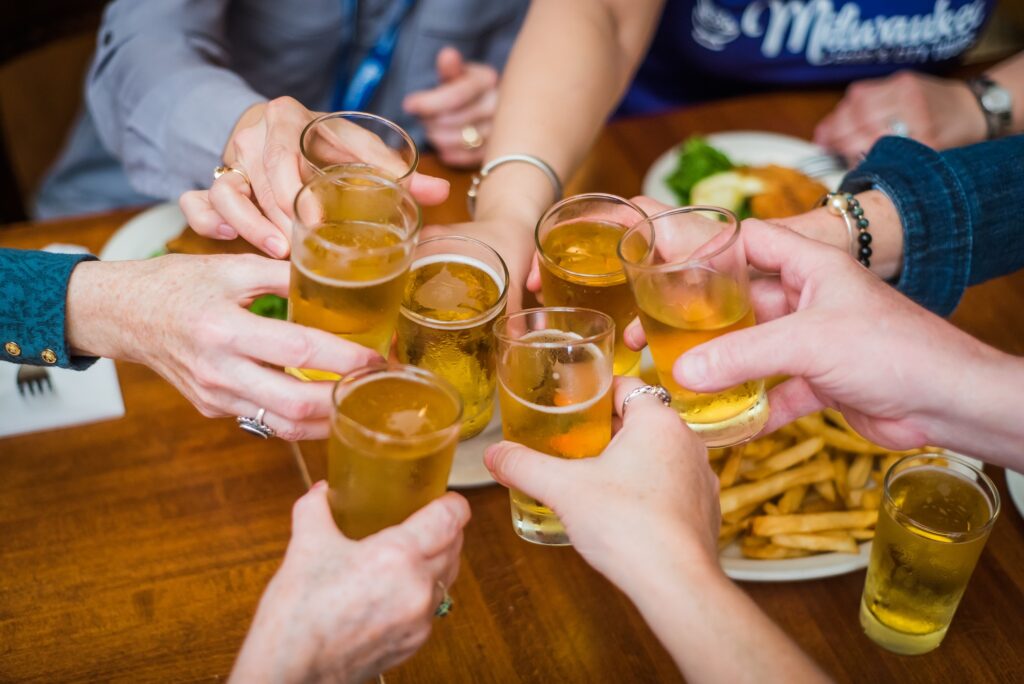
1. Cheese Curds
Starting with the quintessential Wisconsin treat, the cheese curds are a must-try. Locals love them, visitors adore them. Fresh or deep-fried, they’re squeaky, cheesy deliciousness you shouldn’t miss.
Cheese curds, also affectionately referred to as “squeaky cheese,” are an essential part of Wisconsin’s culinary identity, and by extension, Milwaukee’s. Wisconsin, known as “America’s Dairyland,” has been synonymous with cheese production since the 19th century. The state’s rich, verdant pastures were ideal for raising dairy cows, and the European settlers, particularly those from Germany, Switzerland, and Holland, who arrived in Wisconsin brought along their cheese-making traditions.
The cheese-making process involves adding a starter culture and rennet to milk, causing it to coagulate. The solid part that forms, called the curd, is separated from the liquid whey. The curds are then pressed to form cheese. Cheese curds are essentially the freshest form of cheese, eaten before being pressed into molds and aged. They have a mild flavor and a unique “squeak” when bitten into, a characteristic that’s a sign of freshness.
Fun Fact: One of the best places to get cheese curds is at West Allis Cheese Mart in the Milwaukee Public Market, which is featured on our Around the Ward in 90 Minutes tour.
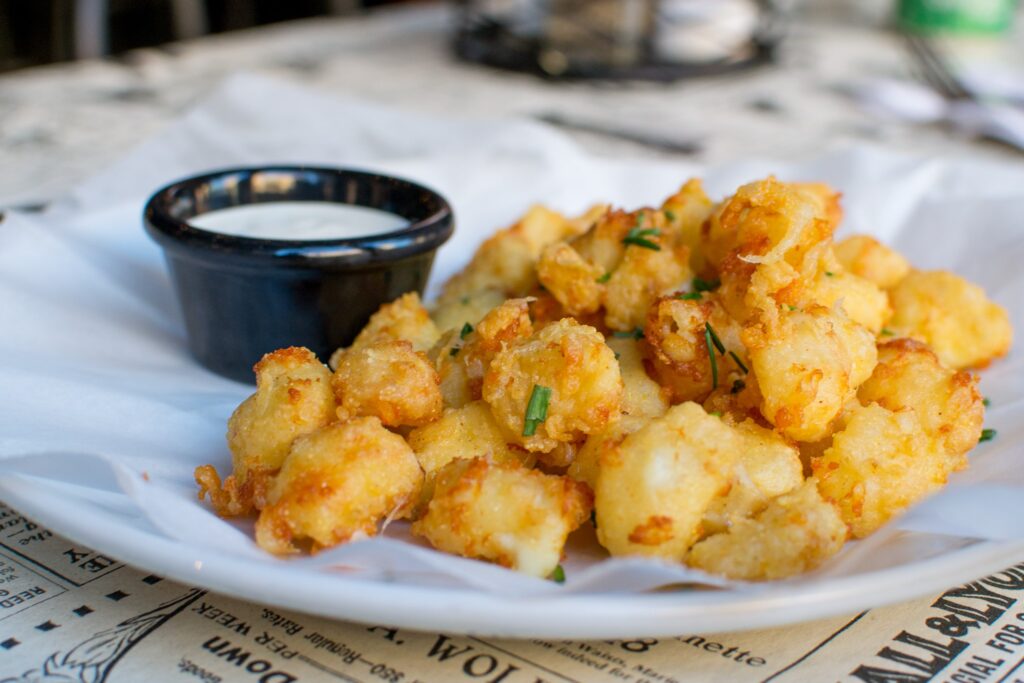
2. Fish Fry
Milwaukee’s tradition of the Friday Fish Fry is an experience to savor. Freshly caught fish, coated with beer batter and deep-fried to perfection, is usually served with potato pancakes, coleslaw, and rye bread.
During the 19th century, Milwaukee witnessed a significant influx of German and Polish immigrants, who brought with them age-old traditions and customs, including their unique culinary practices. Both German and Polish cuisines featured fried fish prominently, as fish was a staple protein source in their home countries. However, it was the Catholic practice of abstaining from meat on Fridays, especially during the Lenten season, that truly cemented the fish fry tradition.
The tradition of the fish fry endured even after the Catholic Church relaxed its rules about meat consumption on Fridays in the 1960s. Today, the fish fry is not just a religious observance or a cultural tradition; it’s an integral part of Milwaukee’s identity. From upscale restaurants to local pubs, the Friday fish fry is an event that brings people of all backgrounds together, reflecting the city’s vibrant community spirit.
So, whether you’re a lifelong Milwaukeean or a first-time visitor, join the Lenten Fish Fry Tour offered by Milwaukee Food & City Tours and stop at 3 of the city’s fish fry hot spots, and conclude the tour with dessert – we can almost guarantee there will be one spot that you’ve never been to before!
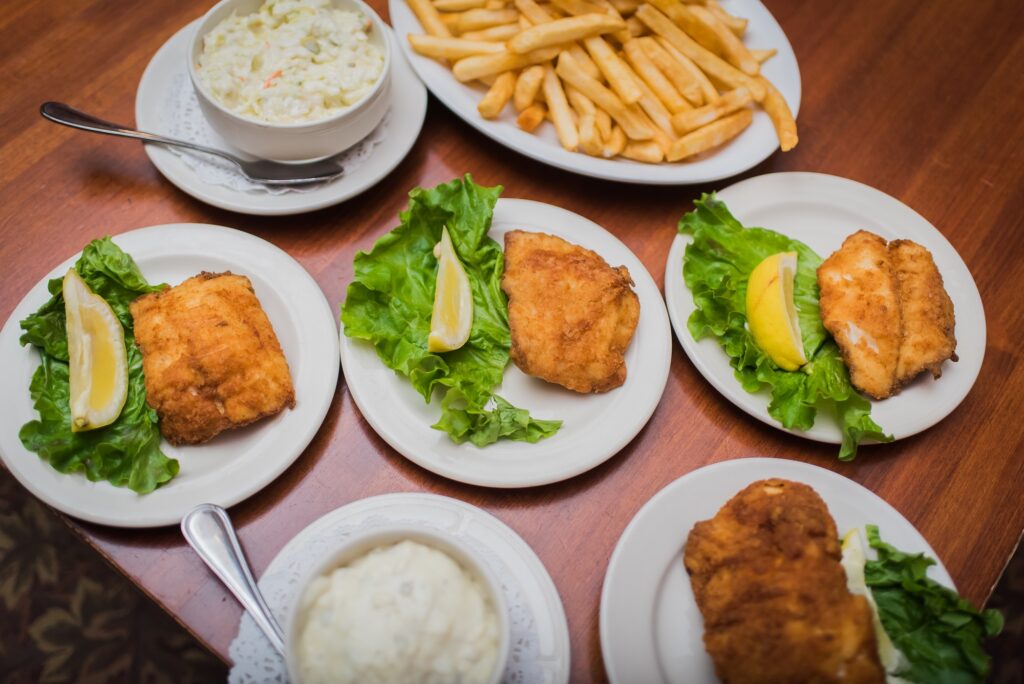
3. Butter Burgers
Indulge in a rich butter burger, a Wisconsin-style delicacy. These juicy, butter-laden burgers are usually topped with Wisconsin’s finest cheese for the ultimate mouth-watering experience.
The butter burger is an iconic staple of Wisconsin, especially in the city of Milwaukee, and it has a fascinating history rooted in the state’s culinary and cultural heritage.
The concept of the butter burger originated in the state of Wisconsin, which is fitting given Wisconsin’s longstanding status as “America’s Dairyland.” This moniker isn’t an exaggeration; Wisconsin has been a leading dairy producer in the United States since the 19th century, and by the early 20th century, the state was responsible for a major portion of the nation’s butter production.
In the 1930s, a Milwaukee tavern owner named Solly (short for Solomon) began serving a unique type of burger in his establishment, Solly’s Grille. He placed a dollop of Wisconsin butter on top of a freshly cooked patty, allowing it to melt into the meat and the bun. The result was an incredibly juicy, flavorful burger that was a hit with his customers. This was the birth of the “butter burger.”
Word of this delicious creation spread, and before long, other restaurants and taverns across the state began serving their own versions of the butter burger. The style became so popular that it spread beyond Wisconsin, with a few chains like Culver’s, founded in Wisconsin but now present across the United States, offering butter burgers as their signature item.
Try one of these delicious buttery delights on our Burger & Custard Capital of the World Tour, a family-friendly bus tour that highlights two of Wisconsin’s best foods- the butter burger and frozen custard!

4. Bratwurst
Paying homage to the city’s German roots, the bratwurst is a much-loved food staple in Milwaukee. Enjoy them grilled or boiled, topped with onions, mustard, and sauerkraut.
The history of bratwurst in Milwaukee is intimately tied to the city’s rich German heritage. In the mid-19th century, thousands of German immigrants settled in Wisconsin, with many making Milwaukee their new home. They brought with them their customs, traditions, and of course, their love for sausages, particularly bratwurst.
The word “bratwurst” comes from the German words “brät,” which means finely chopped meat, and “wurst,” which means sausage. German immigrants used local ingredients, including high-quality Wisconsin pork, to recreate this beloved food from their homeland. Over time, bratwurst became a staple in the local diet and a symbol of Wisconsin’s strong German heritage.
One of the key moments in Milwaukee bratwurst history came in 1953, when the Usinger Company, a well-known local sausage maker, gifted President Dwight Eisenhower a set of “Milwaukee brats”. This event elevated the reputation of Milwaukee bratwursts to the national level.
Today, bratwurst is an essential part of Milwaukee’s food scene.
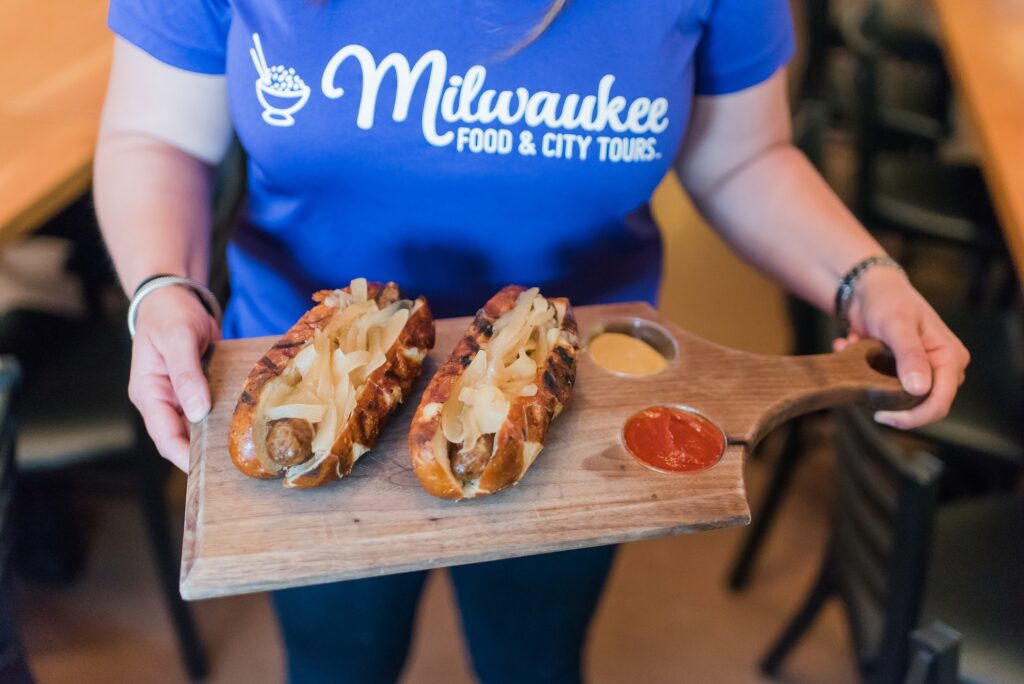
5. Cream Puffs
For a sweet delight, try the famous Wisconsin cream puff. This airy pastry filled with a heavy cream custard will have your sweet tooth begging for more.
The cream puff has an interesting history in Milwaukee and, more broadly, in the state of Wisconsin. While cream puffs are not native to the region, they’ve become one of the state’s most beloved treats thanks to the Wisconsin State Fair.
Cream puffs originated in France, where they’re known as “choux à la crème”. They’re a type of choux pastry filled with whipped cream, custard, or ice cream. However, the story of how these delicate, delicious pastries became a Wisconsin favorite is deeply rooted in local tradition.
In 1924, the Wisconsin State Fair began selling cream puffs, and they quickly became a staple of the annual event. The Wisconsin Bakers Association took over the operation in 1941 and continues to run it today. Each year, the cream puff pavilion at the Wisconsin State Fair produces hundreds of thousands of cream puffs, making it one of the most popular attractions at the fair.
Milwaukeeans and visitors alike line up every year for these legendary pastries, which are made fresh daily at the fairgrounds. The classic Wisconsin State Fair cream puff is filled with a velvety cream custard, a recipe that has been used for decades. The popularity of the cream puffs at the fair has helped them become a beloved treat throughout the state, and many local bakeries in Milwaukee and other cities also produce their own versions.
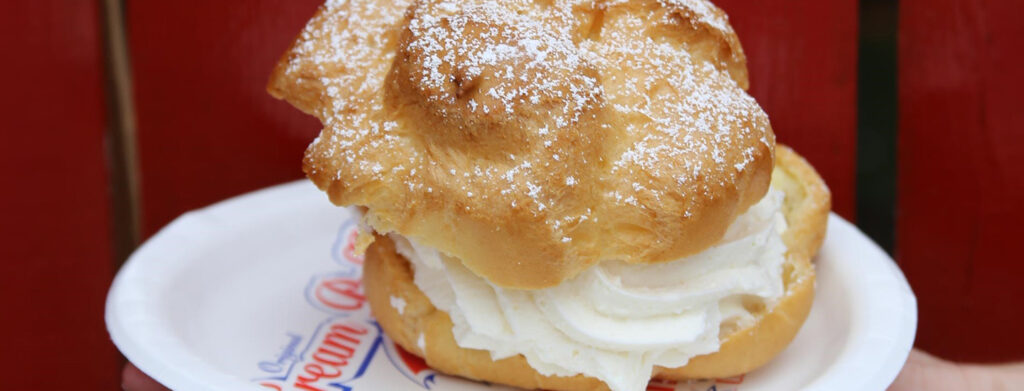
6. Frozen Custard
Creamy and rich, Milwaukee’s frozen custard is like ice cream but with a denser texture. Try it at legendary spots like Leon’s or Kopp’s.
Frozen custard holds a very special place in the hearts of Milwaukee residents, so much so that Milwaukee is often referred to as the “unofficial frozen custard capital of the world.”
Frozen custard holds a very special place in the hearts of Milwaukee residents, so much so that Milwaukee is often referred to as the “unofficial frozen custard capital of the world.”
Frozen custard was first introduced to the United States at the 1933 World’s Fair in Chicago. The Kohr brothers, the inventors of this delicious dessert, sold their custard as a new type of ice cream that was creamier and stayed cold longer, thanks to the added ingredients of egg yolks.
Following its debut, frozen custard quickly gained popularity throughout the Midwest, and in the early 1940s, the treat made its way north to Wisconsin. Leon Schneider, inspired by the popularity of the custard at the World’s Fair, opened Leon’s Frozen Custard in Milwaukee in 1942. His custard, served in a cone or as a sundae, was an instant hit. Leon’s became a local institution and is often credited with popularizing frozen custard in the region.
Around the same time, another Milwaukee institution, Gilles Frozen Custard, opened its doors. The rivalry between these two custard stands, each with its own secret recipe and dedicated fan base, helped to cement Milwaukee’s love affair with this creamy dessert.
Try both of these locations – and more – on the Burger & Custard Capital of the World Tour, a family-friendly bus tour offered by Milwaukee Food & City Tours.

7. Bloody Mary
Milwaukee is known for its extravagant Bloody Marys. Almost a meal on its own, this cocktail often comes with an array of garnishes such as cheese, shrimp, sausage, and even mini burgers.
While the Bloody Mary cocktail wasn’t invented in Milwaukee, the city has unquestionably put its unique spin on this classic drink and made it a beloved part of the local food and drink culture.
The Bloody Mary is a vodka-based cocktail traditionally made with tomato juice, Worcestershire sauce, hot sauces, and spices, served with a celery stalk and a lime wedge. It was reportedly invented in the 1920s or 1930s, with multiple claims to its origin.
Despite the cocktail’s murky origins, Milwaukee has wholeheartedly embraced the Bloody Mary and elevated it to new heights. While many places serve a version of the Bloody Mary, Milwaukee’s renditions are known for their extravagant garnishes that often turn the drink into a full meal.
The trend of loading up a Bloody Mary with all manner of foods might have originated in the 1980s or 1990s, but it’s clear that Milwaukee has taken this to heart. In many Milwaukee establishments, the garnishes on a Bloody Mary can range from pickles, olives, and cocktail onions to cheese cubes, sausage slices, shrimp, bacon, and even mini cheeseburgers. Some places even offer a beer chaser (known locally as a “snit”) on the side, a nod to Milwaukee’s brewing heritage.
One of the city’s most famous Bloody Marys can be found at Sobelman’s Pub & Grill. Their “Bloody Beast” comes topped with a whole fried chicken and has been featured on national television.
A great way to experience Milwaukee’s Bloody Mary scene is to join us for a Sunday morning brunch-time extravaganza! Take the Bloody Mary Brunch Tour to explore Milwaukee’s bloody-good brunch scene via The Hop, Milwaukee’s new streetcar. Start your tour in the Historic Third Ward (once known as the Bloody Third Ward) and discover some hidden gems with us while enjoying traditional brunch-time fare, Bloody Marys, and stories of Milwaukee’s past.
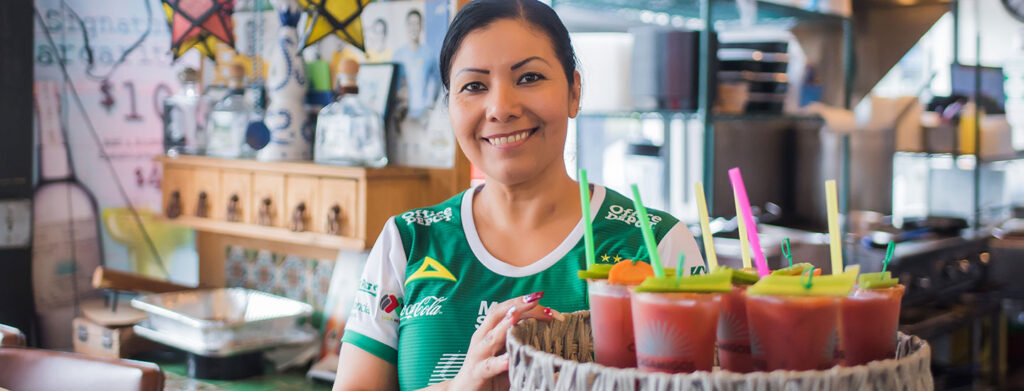
8. Pretzels
Another nod to Milwaukee’s German heritage, soft, warm pretzels served with tangy mustard or gooey cheese sauce make for the perfect snack.
Pretzels have a rich history in Milwaukee, primarily due to the significant influence of German immigrants in the city. The tradition of pretzel-making dates back to medieval Europe, and it’s widely considered that the pretzel was brought to America by German immigrants in the 18th century. When German immigrants settled in Milwaukee throughout the 19th century, they brought with them their cherished food traditions, including the pretzel. Today, soft, warm pretzels, often served with mustard or a beer cheese dip, can be found throughout Milwaukee in breweries, beer gardens, restaurants, and bakeries.
Fun Fact: We love pretzels so much that each of our Pre-Prohibition Historic Bar Tours start out with a delicious pretzel from Milwaukee Pretzel Company!
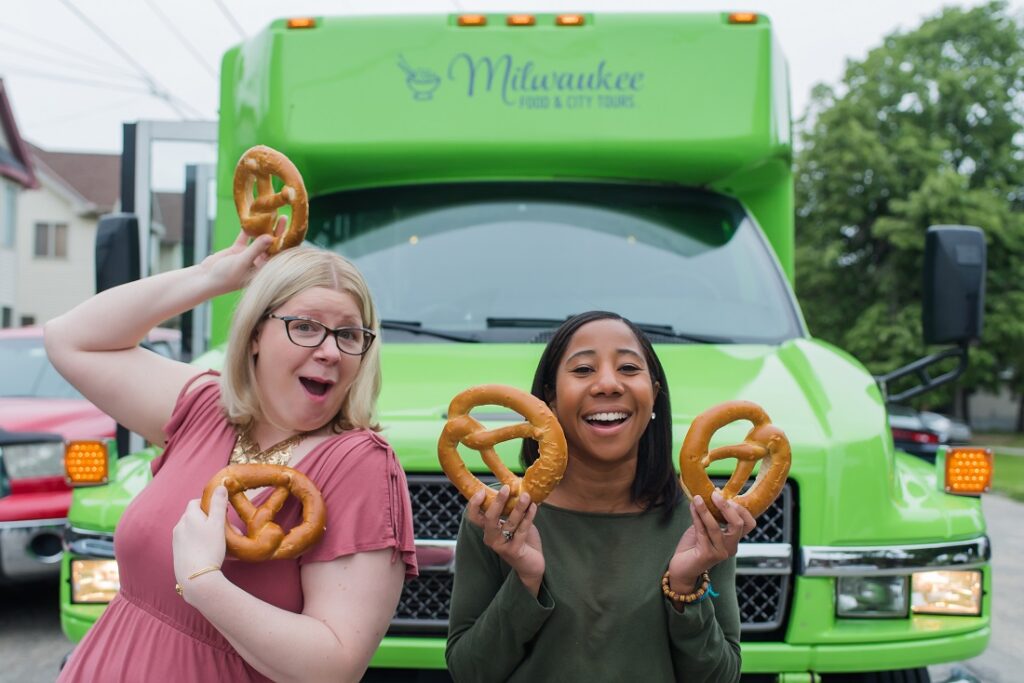
9. Sausages
From Polish to Italian, the city boasts an array of sausages. They’re often served at tailgate parties, especially during Brewers’ games.
Much like the bratwurst, sausages in general owe their popularity in Milwaukee to the city’s strong German roots. Sausages were a versatile and economical food source for German immigrants, as they could be made with a variety of meats and utilized almost every part of the animal. Milwaukee became a hub for sausage production, with local businesses like Usinger’s and Klement’s Sausage Company establishing themselves as purveyors of high-quality German-style sausages. Sausages are still a staple in Milwaukee, whether served at a barbecue, a tailgate party, or in a bowl of traditional Wisconsin beer cheese soup.
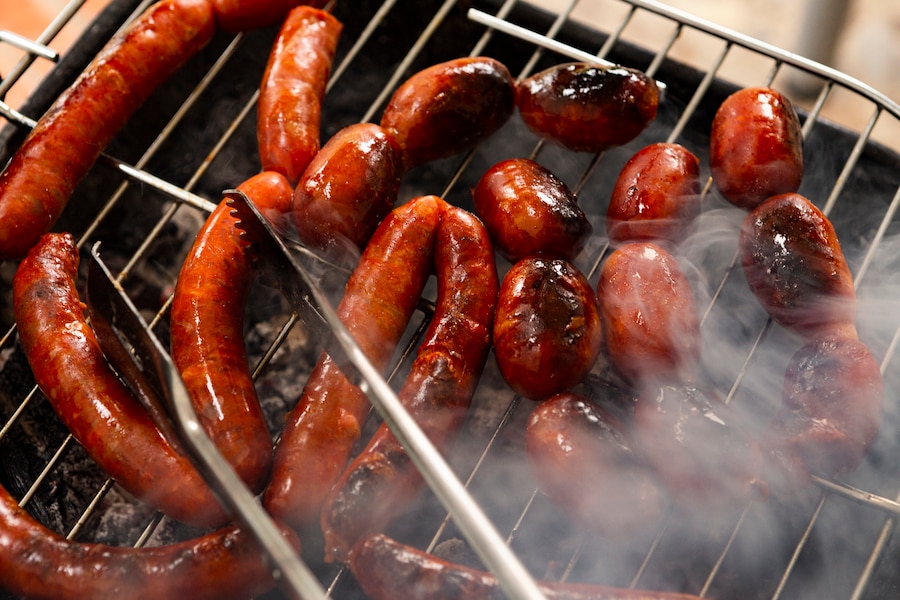
10. Smelt
Small, fried fish usually served with tartar sauce, smelt is a classic Milwaukee staple, especially during Lent.
Smelt is a small fish found in the Great Lakes, including Lake Michigan, which borders Milwaukee. Smelt fries became popular in the mid-20th century and are particularly prevalent during Lent.
Smelt, a small, silvery fish found in abundance in the Great Lakes, has a unique history in Milwaukee and the surrounding region. Although not originally native to the area, it became a significant part of the local diet and culture in the 20th century.
Smelt were first introduced to the Great Lakes unintentionally in the late 19th and early 20th centuries. They thrived in the new environment and quickly multiplied, leading to large smelt populations in lakes, including Lake Michigan, which borders Milwaukee. Today, changes in the ecosystem have led to a decrease in the smelt population in the Great Lakes, but smelt remains a part of Milwaukee’s culinary tradition. Smelt fries still occur, particularly during Lent, and the fish can be found on menus at various local establishments. While they may not be as prevalent as they once were, smelt has left a lasting impact on Milwaukee’s food culture, reflecting the city’s ability to adapt to the resources provided by its natural surroundings.
Our classic Milwaukee Fish Fry Tour just may surprise you- we tour an area Catholic church during this Lenten season tour, stopping at 3 of the city’s fish fry hot spots… will smelt be on the menu at one of these stops?!?

11. Pączki
A pre-Lenten treat, these Polish doughnuts filled with fruit or cream are a delicacy you shouldn’t miss.
These Polish doughnuts are a pre-Lenten treat introduced by Polish immigrants. With Milwaukee’s substantial Polish population, it’s no surprise that Pączki Day is enthusiastically celebrated.
Pączki (pronounced “POHNCH-kee”) are rich, jelly-filled Polish doughnuts that are traditionally eaten on Fat Tuesday, the day before the Christian season of Lent begins. They represent a way of using up all the sugar, fat, eggs, and fruit in the house – ingredients that were often avoided during the period of fasting and reflection that Lent represents.
The tradition of making and eating pączki was brought to Milwaukee by Polish immigrants, who began arriving in the city in significant numbers in the late 19th century. By the turn of the 20th century, Milwaukee had one of the largest Polish populations in the United States, and the Polish community’s culinary traditions, including pączki, became an integral part of the city’s food culture.
Today, Milwaukeeans of all backgrounds enjoy pączki on Fat Tuesday, which is locally referred to as Pączki Day. Bakeries across the city start production well before dawn to keep up with demand, offering traditional flavors like prune and raspberry alongside more inventive fillings. Many people line up early in the morning to ensure they can get their hands on these once-a-year treats. Whether you’re of Polish descent or just a lover of sweet treats, Pączki Day in Milwaukee offers a chance to engage in a tasty tradition that spans generations.
Join us on the Christmas Around Milwaukee Bakery Tour to visit one of our favorite Milwaukee bakeries: National Bakery! National Bakery & Deli was founded in 1925 in the heart of an old Polish neighborhood by Louis Wisniewski. As we understand, Louis named it National Bakery & Deli because he interpreted “National” in his native Polish language to signify for the people. The tradition of quality baking has prospered over the years and attracts people throughout the Milwaukee area and the state of Wisconsin. Its reputation makes it the busiest bakery in town!
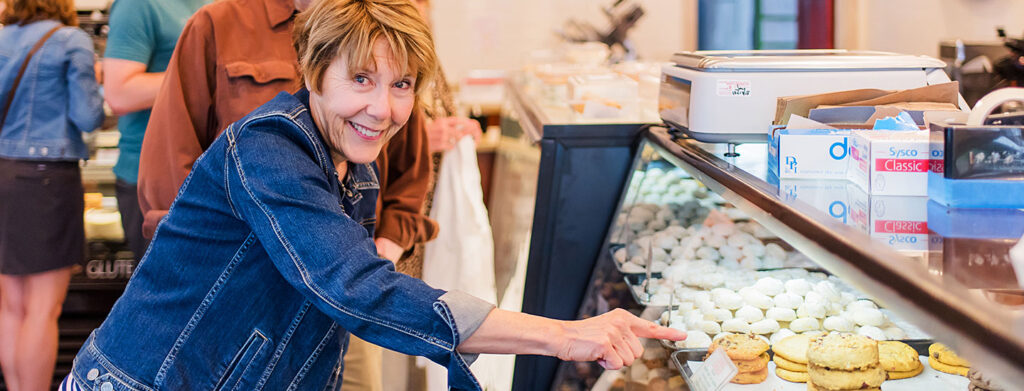
12. Milwaukee Style Pizza
Round off your foodie journey with a local pizza featuring ultra-thin crust, rounded sausage pieces, diced onions, and of course, loads of cheese.
Pizza in Milwaukee often features a thin, cracker-like crust, rounded sausage chunks, diced onions, and is heavily topped with cheese. While pizza styles can vary in Milwaukee, the use of Wisconsin cheese is a common and delicious thread.
Wisconsin’s pizza scene, including that of Milwaukee, is as diverse and varied as its population, with influences ranging from Italian immigrants to the state’s own dairy industry. It may not have a distinct, singular style like Chicago’s deep-dish or New York’s thin crust, but Wisconsin pizza has its own unique characteristics that make it noteworthy.
Wisconsin’s pizza story starts with Italian immigrants who brought their culinary traditions with them. In the early 20th century, as pizzerias began to spring up across the U.S., Wisconsin was no exception. The first pizzerias in cities like Milwaukee offered classic Neapolitan-style pizza that adhered closely to Italian tradition.
However, over time, Wisconsin pizza evolved to include local influences. One distinct style that you might find in some parts of Wisconsin, including Milwaukee, is tavern-style pizza. This is a thin-crust pizza cut into squares (or tavern cut) rather than wedges. It’s typically loaded with cheese (no surprise given Wisconsin’s dairy industry) and toppings that often include rounds of sausage.
From classic Italian pizzerias to trendy artisanal pizza joints, you’ll find a pizza scene in Milwaukee that, much like the city itself, offers a little something for everyone. This is perfectly highlighted on our Milwaukee Pizza Bus Tour, where you can explore the history of pizza in Milwaukee. Together we’ll enjoy a big serving of New York-style pizza, as well as an Old World pizza made by traditional wood-fired oven, and enjoy a generous sampling of the quintessential thin-crust pie that came to define Milwaukee-style pizza. Along the way, we’ll talk about pizza in its early days – and how it has become one of the world’s most popular foods. Be sure to save room for dessert; this excursion concludes with a divine scoop of gelato!
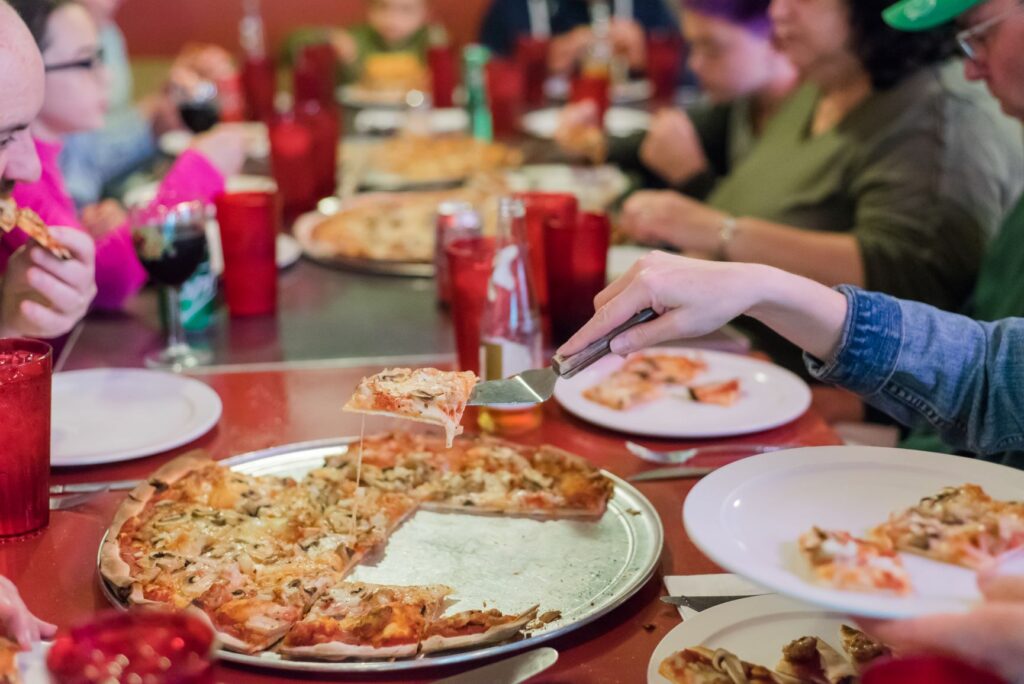
Try One of Our Tours!
Savor the true heart of Chicago with our fun, expert guides. Visitors get a taste of the real deal, and locals discover new go-to favorites.
